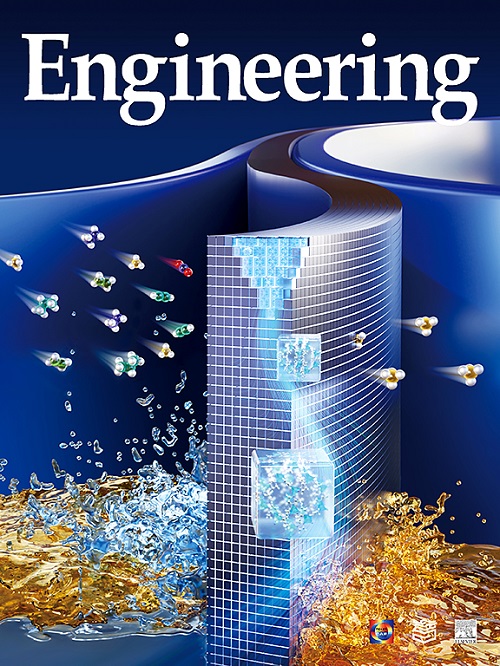Machine-Learning-Assisted Compositional Design of Refractory High-Entropy Alloys with Optimal Strength and Ductility
IF 10.1
1区 工程技术
Q1 ENGINEERING, MULTIDISCIPLINARY
引用次数: 0
Abstract
Designing refractory high-entropy alloys (RHEAs) for high-temperature (HT) applications is an outstanding challenge given the vast possible composition space, which contains billions of candidates, and the need to optimize across multiple objectives. Here, we present an approach that accelerates the discovery of RHEA compositions with superior strength and ductility by integrating machine learning (ML), genetic search, cluster analysis, and experimental design. We iteratively synthesize and characterize 24 predicted compositions after six feedback loops. Four compositions show outstanding combinations of HT yield strength and room-temperature (RT) ductility spanning the ranges of 714–1061 MPa and 17.2%–50.0% fracture strain, respectively. We identify an attractive alloy system, ZrNbMoHfTa, particularly the composition Zr0.13Nb0.27Mo0.26Hf0.13Ta0.21, which demonstrates a yield approaching 940 MPa at 1200 °C and favorable RT ductility with 17.2% fracture strain. The high yield strength at 1200 °C exceeds that reported for RHEAs, with 1200 °C exceeding the service temperature limit for nickel (Ni)-based superalloys. Our ML-based approach makes it possible to rapidly optimize multiple properties for materials design, thus overcoming the common problems of limited data and a vast composition space in complex materials systems while satisfying multiple objectives.
具有最佳强度和延展性的难熔高熵合金的机器学习辅助成分设计
高温(HT)应用领域的难熔高熵合金(RHEAs)设计是一项艰巨的挑战,因为可能的成分空间巨大,包含数十亿种候选成分,而且需要在多个目标之间进行优化。在此,我们提出了一种方法,通过整合机器学习(ML)、遗传搜索、聚类分析和实验设计,加速发现具有优异强度和延展性的 RHEA 成分。经过六个反馈循环,我们迭代合成并表征了 24 种预测成分。四种成分显示出出色的高温屈服强度和室温(RT)延展性组合,其范围分别为 714-1061 兆帕和 17.2%-50.0% 断裂应变。我们发现了一种极具吸引力的合金体系 ZrNbMoHfTa,尤其是成分 Zr0.13Nb0.27Mo0.26Hf0.13Ta0.21,它在 1200 °C 时的屈服强度接近 940 兆帕,室温延展性良好,断裂应变为 17.2%。1200 °C 时的高屈服强度超过了所报道的 RHEAs,而 1200 °C 则超过了镍(Ni)基超合金的使用温度极限。我们基于 ML 的方法使快速优化材料设计的多种性能成为可能,从而克服了复杂材料系统中数据有限和成分空间巨大的常见问题,同时满足了多种目标。
本文章由计算机程序翻译,如有差异,请以英文原文为准。
求助全文
约1分钟内获得全文
求助全文
来源期刊

Engineering
Environmental Science-Environmental Engineering
自引率
1.60%
发文量
335
审稿时长
35 days
期刊介绍:
Engineering, an international open-access journal initiated by the Chinese Academy of Engineering (CAE) in 2015, serves as a distinguished platform for disseminating cutting-edge advancements in engineering R&D, sharing major research outputs, and highlighting key achievements worldwide. The journal's objectives encompass reporting progress in engineering science, fostering discussions on hot topics, addressing areas of interest, challenges, and prospects in engineering development, while considering human and environmental well-being and ethics in engineering. It aims to inspire breakthroughs and innovations with profound economic and social significance, propelling them to advanced international standards and transforming them into a new productive force. Ultimately, this endeavor seeks to bring about positive changes globally, benefit humanity, and shape a new future.
 求助内容:
求助内容: 应助结果提醒方式:
应助结果提醒方式:


